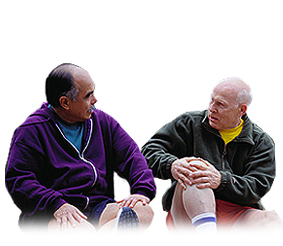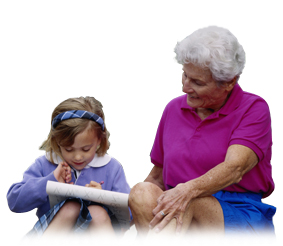Knee Pain SmartSiteTM | ||||||||||||||||||
In the hospital after knee replacementDescriptionYou will stay in the hospital for 1 to 3 days after having knee joint replacement surgery. During that time, you will recover from your anesthesia and the surgery itself. Right after surgeryYour surgeon may talk to family or friends right after surgery is done. But, you will spend a few hours after surgery in the recovery room before going to your room to meet your loved ones. You will likely wake up tired and groggy. You will have a large dressing (bandage) over your incision (cut) and part of your leg. A small drainage tube may be placed during surgery to help drain blood that collects in your knee joint after surgery. Back in your roomYou will have an IV (a tube that is inserted into a vein, usually in your arm). You will receive fluids through the IV until you are able to drink on your own. You will slowly resume a normal diet. You may have a Foley catheter inserted into your bladder to drain urine. Usually it is removed the day after surgery. You may have some difficulty passing your urine after the tube is removed. Make sure you tell the nurses if you feel bloated or difficulty to void. Your nurse will show you how to prevent blood clots. You will wear special compression stockings on your legs. These stockings improve blood flow and reduce your risk of getting blood clots. This can be uncomfortable, but they are very important for your health after the knee replacement procedure.
You may be taught how to use a device called a spirometer and do deep breathing and coughing exercises. This exercise allows you to open your lungs, which can be affected after anesthesia. Doing these exercises will help prevent pneumonia. Your doctor will prescribe pain medicines to control your pain.
Your doctor may also prescribe antibiotics to prevent infection. You will be encouraged to start moving and walkingYou will be helped out of bed to a chair on the first day after surgery. You may even be asked to try walking. The following people will help you learn how to get moving again and take care of yourself:
All of this takes a lot of hard work on your part, but the effort will pay off with a faster recovery and better results. You will be encouraged to do as much as you can for yourself by the second day. This includes going to the bathroom and taking walks in the hallways, always with someone helping you. You will learn the proper positions for your legs and knees. Make sure you follow these instructions as bad positions can cause the new knee joint to be injured. Getting ready to go homeYou and your family should be sure to make your home ready and safe for you before you go home. Also, before you are allowed to leave the hospital, you will need to meet these goals:
Some people need a short stay in a rehabilitation center after they leave the hospital and before they go home. At a rehab center, you will learn how to safely do your daily activities on your own. | ||||||||||||||||||
| ||||||||||||||||||
Review Date: 8/9/2018 Reviewed By: C. Benjamin Ma, MD, Professor, Chief, Sports Medicine and Shoulder Service, UCSF Department of Orthopaedic Surgery, San Francisco, CA. Also reviewed by David Zieve, MD, MHA, Medical Director, Brenda Conaway, Editorial Director, and the A.D.A.M. Editorial team. View References:  The information provided herein should not be used during any medical emergency or for the diagnosis or treatment of any medical condition. A licensed medical professional should be consulted for diagnosis and treatment of any and all medical conditions. Links to other sites are provided for information only -- they do not constitute endorsements of those other sites. No warranty of any kind, either expressed or implied, is made as to the accuracy, reliability, timeliness, or correctness of any translations made by a third-party service of the information provided herein into any other language. © 1997- A.D.A.M., a business unit of Ebix, Inc. Any duplication or distribution of the information contained herein is strictly prohibited. | ||||||||||||||||||
A.D.A.M. content is best viewed in IE9 or above, Firefox and Google Chrome browser. | ||||||||||||||||||












